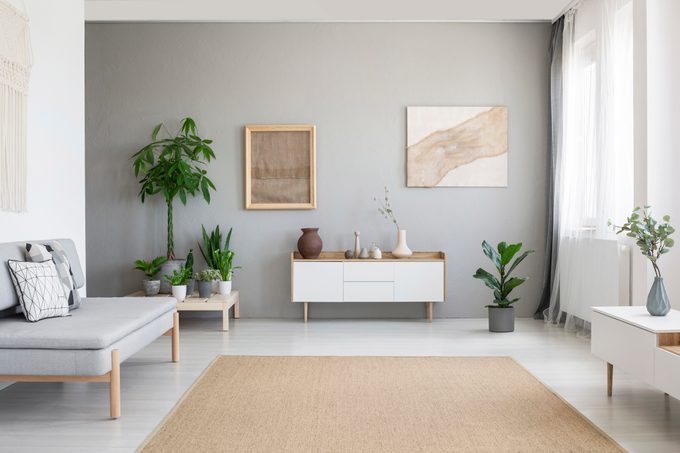What Is Swedish Death Cleaning?
Updated: Dec. 22, 2023

Swedish death cleaning sounds like an underground metal band or cleaning job in the aftermath of a crime scene, but it's actually a pragmatic, thoughtful way to get your home in order.
There’s a minimalist cleaning trend that is about as practical as it gets, but it’s very different from other popular decluttering styles, such as Marie Kondo’s KonMari Method. Swedish death cleaning, which has a name that sounds off-putting, is anything but nefarious. Instead, the Scandinavian cleaning style is a bare-bones approach to keeping only what you need and getting rid of life’s excesses.
What Is Swedish Death Cleaning?

In simple terms, the cleaning style is a thoughtful approach to minimalism—a decluttering method that encourages people to minimize their belongings to necessities to make it easier for their loved ones in the wake of their passing.
Author Margareta Magnussen popularized the term in her 2017 book The Gentle Art of Swedish Death Cleaning: How to Free Yourself and Your Family from a Lifetime of Clutter. Per the book’s description from its publisher, Simon and Schuster, the phrase comes from the English translation of the Swedish decluttering practice called döstädning. Broken down, dö means “death,” and städning means “cleaning.”
Per the book’s first few pages, in Swedish, the term “means that you remove unnecessary things and make your home nice and orderly when you think the time is coming closer for you to leave the planet.” However, the practice can take place at any stage of life—and once you try it, it may be one of the cleaning hacks you’ll wish you knew sooner.
How to Do Swedish Death Cleaning
You shouldn’t approach Swedish death cleaning as a morbid, difficult task, but rather as a Scandinavian cleaning method that examines life with a minimalist outlook. It asks of you the practical question, “What will my home look like for my loved ones when I’m gone, and how can I make it easier for them?” Instead of Marie Kondo’s organization tips—like examining which items in your life “spark joy”—this Swedish practice is about eliminating what you don’t use or need. Swedish death cleaning has some basic principles you can instill in your everyday life, though it is based on the idea of a near-end-of-life practice.
In her book, Magnussen notes that even in your thirties, you can call your decluttering process death cleaning. It’s a thoughtful and simple house-cleaning trick based on detaching from sentimentality (within reason) and doesn’t have to occur at any specific age. “Sometimes you just realize that you can hardly close your drawers or barely shut your closet door,” Magnussen writes in her book. “When that happens, it is definitely time to do something, even if you are only in your thirties. You could call that kind of cleaning döstädning, too, even if you may be many, many years away from dying.”
Here are some practical tips to get started with Swedish death cleaning in your own home.
Start With Clothing
You should skip the sentimental items (like photos) as a first step and head straight for your closet. This is because it’s easier to find clothing to get rid of due to sizing disparities and things that have gone out of style. Start by weeding out things you don’t wear and those that no longer fit. As you get rid of clothing items, you can also begin organizing your closet’s shelves based on practical categories like colors, seasons or occasions.
Declutter Items That Take up Space
As you go through your home, the next place to look is at items that take up a lot of space. Begin with these larger items, like couches and large furniture pieces, and work your way down through size. You’ll instantly start freeing up some space in your home by going from larger to smaller.
Eventually, you’ll move on to your small, personal and sentimental items. You can store the small items you decide to keep in a box or designated container.
In most cases, Swedish death cleaning looks past sentimentality—think logically about what you need to keep versus what you can part with.
Tackle Your Digital Clutter
Digital clutter is not a pleasure to go through no matter your age. So when you’ve worked through the physical items in your home, look at your digital trail. Take some time to delete files you don’t need, and consider making a notebook for your family members full of your essential login information, such as the logins to your bank accounts, so they can easily access what they need when you’re no longer here.
The central concept here is to keep the most important things, forcing you to look at what is essential and what is not, no matter how far along in life you are.



















